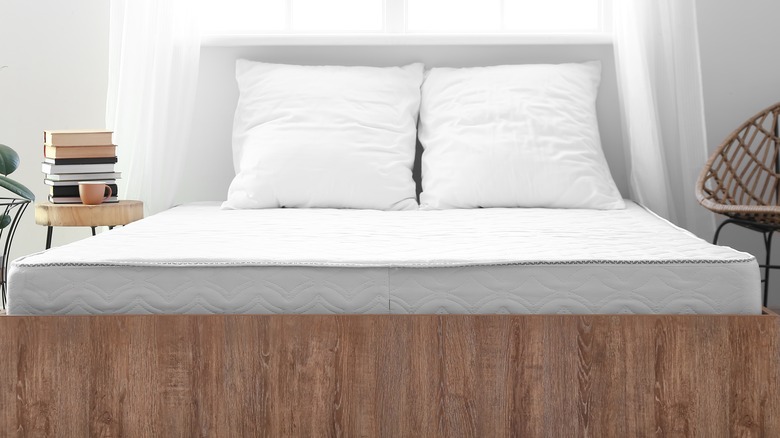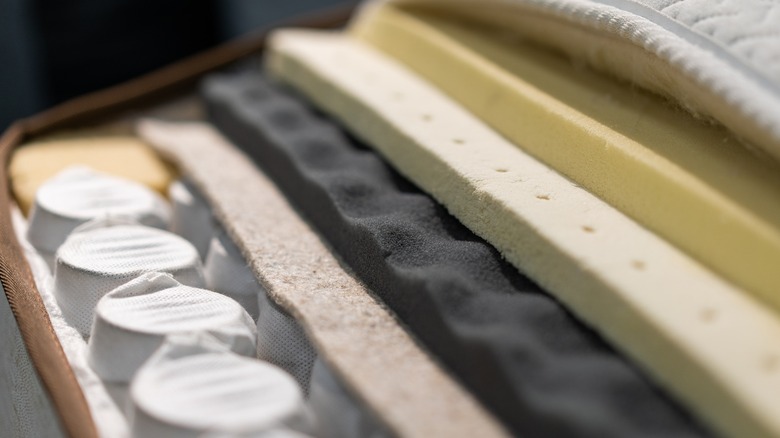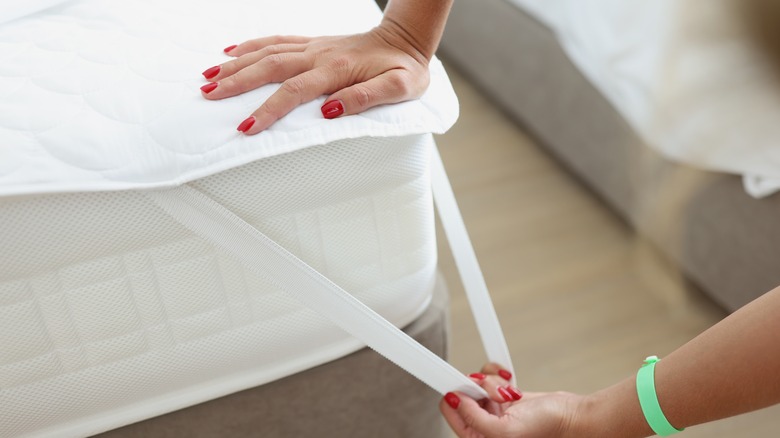The Gross Reason You're Never Really Alone If You're Sleeping On An Old Mattress
We all have our different bedtime routines. The time we go to bed, the order we do our ablutions beforehand, the position we sleep in, the amount of sleep we tend to get, how much we sleep under blankets — all of these little elements are as unique as fingerprints or our musical tastes.
As for the amount of sleep we get, that'll differ on a day-by-day basis. Centers for Disease Control and Prevention recommends that adults between the ages of 18 and 60 sleep for at least seven hours every night, though it's certainly difficult to hit that bullseye every time. The right bed can be a huge factor in that.
Some of us struggle to sleep if we're not in our own beds. Others can only use a single pillow, while some need to be thoroughly ensconced in several. Most of us can agree, however, that there's no feeling quite like fresh, clean sheets. As it turns out, there's a big reason why we just adore fresh bedclothes: that beloved bed of ours can get very gross indeed if it's not regularly maintained, particularly the mattress.
Dastardly dust mites
How often should bedsheets be washed? That's another much-debated topic in the wide and wonderful world of sleep. Sleep Foundation suggests that once a week is a good guideline, and around twice as often if one of the users of the bed is sick, has allergies, or if a furry friend likes to share it.
Getting into such a routine is crucial, the outlet continues, not only because our bodies secrete sweat and other unsavory things we don't want to sleep among night after night. Those dreaded dust mites also delight in such conditions, and they can exist in our beds in huge numbers. We can't see them, but they're there, lurking, and that's more than enough reason to be a little more diligent with our washing routines.
The UK's National Health Service, via Cambridge University Hospital, offers guidance for those who have been diagnosed with a house dust mite allergy. It reports that these little pests are found throughout homes, but especially in one particular area: beds and, most notably, mattresses.
In February 2000, The Wall Street Journal reported that remedies against dust mites include pricey vacuum cleaners, specialty air filters, rug powders, and wipes. But the outlet stressed that simply washing our bedding is really the most effective course of action, as dust mites can have a dramatic effect on an old mattress.
We don't know how much weight a mattress gains
The American Lung Association states that allergens from dust mites (proteins from their dead bodies and poop, disgustingly) are found in the beds of about four out of five American homes. Those with an allergy will find their nasal passages inflamed as a result, and it's important for them to reduce the presence of these critters. One major way of doing this is regularly and thoroughly washing bedsheets.
The mattress is of particular importance here because it bears the brunt of everything we (and those darn mites) shed during the night. As Live Science reports, many mattresses have been sold over the years by the claim that a mattress will double in weight after a decade, as so much dead skin, mite remains, and lots and lots of sweat accumulate within it. This is a bold and exaggerated mattress-selling claim, it seems. Ohio State University entomologist Glen Needham told the outlet, "To the best of my knowledge, there is no scientific answer to the mattress weight and dust mite query."
Naturally, with cleaning regimens, the proliferation of dust mites, and other factors differing so much from bed to bed, there's no set amount of weight a mattress will gain over a set amount of time. It seems inevitable, though, that the older a mattress is, the more tiny friends you're likely to have sleeping in it with you.


